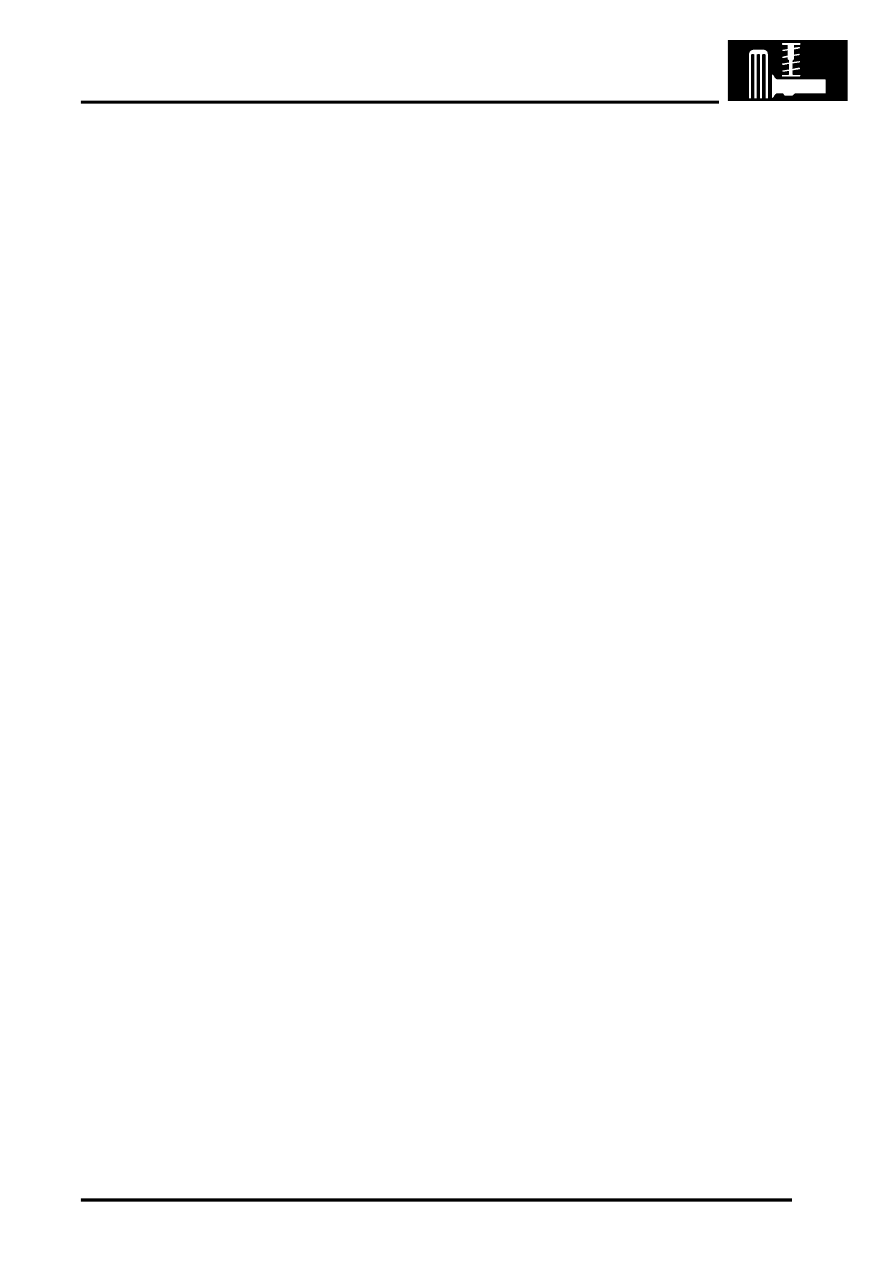L322 Range Rover System Description and Operation

SUSPENSION
DESCRIPTION AND OPERATION
60-7
The independent rear suspension offers a reduction of un-sprung mass over the conventional beam axle design. The
suspension arms have been designed for maximum ground clearance. Wheel alignment can be adjusted for camber
and toe-in using eccentric bolts.
The following wheel travels are shown for on road and off-road vehicle operation. The difference between the two
operating conditions is a result of operation of the rear cross-link valve. When the cross-link valve is opened the
suspension travel is as given for off-road wheel travel. When the cross-link valve is closed the suspension travel given
for on road applies.
The off road mode wheel travel is:
l
190 mm bump
l
140 mm rebound
l
This gives a total of 330 mm off road suspension travel.
The on road standard height wheel travel is:
l
140 mm bump
l
190 mm rebound
l
This gives a total of 330 mm on road suspension travel.
The rear suspension comprises:
l
Two dampers
l
Two air springs
l
Subframe
l
Two upper wishbones
l
Two lower wishbones
l
Two toe control arms
l
Anti-roll bar
l
Anti-roll bar links
l
Two hub assemblies.
Dampers
The rear dampers are unique to New Range Rover and are of a mono-tube design manufactured by Bilstein. The
mono-tube design gives the following advantages over conventional twin tube dampers:
l
Lightweight construction
l
Excellent high frequency response
l
Consistent performance – mono-tube design eliminates fluid aeration and emulsification
l
Larger diameter piston produces increased fluid displacement for a given damper stroke resulting in more
accurate damping control.
The damper comprises a single tube which forms the operating cylinder. The lower end of the cylinder has an eye
which accepts the bush for mounting to the lower wishbone. A piston and rod slides inside the cylinder. The rod
emerges from the top of the cylinder which is fitted with a rod guide and a seal.
A dust cover is fitted to the top of the rod and protects the rod from damage. A bump stop is fitted to the top of the
piston rod, under the dust cover, and protects the damper from full travel impacts. A top mount is fitted at the top of
the piston rod and is secured with a flanged nut. A hardened washer is fitted between the shoulder on the piston rod
and the bump washer which is fitted inside the dust cover. When the damper is removed and replaced, care must
taken to ensure that the correct hardened washer is refitted in the correct position. The washer prevents the piston
rod shoulder causing damage to the bump washer.
The piston is fitted with reed valves which cover a series of holes, through which oil can pass. A chamber at the base
of the damper is sealed by a free floating piston. The chamber is filled with inert gas. When the damper is assembled
and filled with oil, the gas is in a compressed condition below the piston. On the bump stroke, the downward
movement of the piston displaces oil from the full area (bottom) of the cylinder to the cylinder annulus (top). The
energy required to pump the oil through the piston drillings and reed valves creates the damping action.
As the piston moves downwards, the volume available on the annulus side of the piston is less than required by the
displaced oil from the full area side. When this occurs, the free floating piston moves downwards, further compressing
the gas and providing the additional volume for the displaced oil and further enhancing the damping process.
